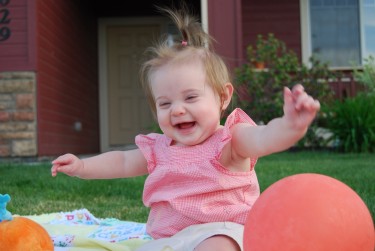
I read all the websites about how a baby is supposed to develop during the first year, but it leaves me more confused than anything. How do I know what my baby should be doing physically and when I should worry?
I hear this question a lot, and with good reason. Not everyone comes to parenthood with experience around babies, so how would you know what they should be doing? Sometimes even when you’ve been around young children, it’s different when it’s your own.
Parenthood, particularly in those few weeks and months, can be marked by questions, insecurities and feelings of being overwhelmed about what’s “normal” and what’s not. It would be impossible to cover all of what a baby should be doing in one article, but I’m going to try to give you some insight into basic physical milestones during the first year.
Typically, I’m hesitant to give parents month markers for when a milestone should be accomplished, but I will give ranges. Please remember that each child develops at his or her own pace. A child’s natural inclination, temperament, birth trauma, exposure and experiences, amongst other variables, can have an effect on when a child reaches these stages.
That said, if you are spending a lot of time, over a period of time, with other babies in your child’s age range and you feel concerned about your child’s development, don’t hesitate to reach out! Asking a simple question can ease your mind, and if the pediatrician or child development specialist shares your concern, you can get started early with any support your child may need.

Smiling. After sleepless nights, endless feeds and the transition to parenthood (not easy!) is a huge reward… a smile! Now don’t get me wrong, having a baby is, in and of itself, a gift. But the first time you see that smile in response to your voice, or touch, or silly face, it can be magical. Typically, first smiles appear between 2-3 months.
Tracking and Grasping. Babies begin to track items with their eyes at the 1-2 month point. Remember to be patient. Sometimes coordinating the muscles to track that toy can take a little longer. So, at first, their eyes may follow before they turn their necks. This is a great time to tune in to what gets a reaction from your baby (sight, sound, human faces, etc.). Grasping and grabbing for toys comes in a little later. It’s hard work to make that arm reach out, hand open and then close again around an object. Usually, you’ll see these skills developing around 4 months.
Rolling Over. The ability to roll over is aided immensely by including tummy time in your baby’s day-to-day life. Typically between 4 and 6 months, babies will start experimenting with rolling from one side to the other. Often this happens accidentally as they are reaching for a toy or trying to push up onto their hands when laid flat on their bellies. Often babies roll from belly to back first. Remember, those first few flips can be as surprising for baby as for you. If they cry or seem upset, it’s not necessarily that they’re unhappy, but may just be that the roll was unexpected. Having a baby who is “on the move” adds a whole new level to play.
Stay tuned for Part Two of this question, where I’ll cover a baby’s physical development through walking. In the meantime, take a look at some of my favorite infant toys.
Please remember, this is only a guide. In my work, I advise parents that if their child is 2-3 months outside the upper limit of one of these time ranges, and they haven’t already spoken with their pediatrician, they should reach out. No one knows their child as well as a parent. If at any point you are concerned about your child’s development, never hesitate to ask.
Like what you read? Sign up for our free newsletter so you can be informed of the latest FREE webinars & teleclasses, parenting articles, & weekly raffles.
Dana Rosenbloom has a master’s degree in Infant and Parent Development and Early Intervention and has been working with children and families for over 10 years. Dana’s Kids offers home, school and web-based services in the areas of parent education, play and behavior therapy, special education services, parent workshops and support groups, and professional development. To learn more about Dana and Dana’s Kids, and to subscribe for her FREE newsletter, please visit www.DanasKids.com. You can also follow Dana on Facebook: www.facebook.com/
The views and opinions expressed on this blog are purely the blog contributor’s. Any product claim, statistic, quote or other representation about a product or service should be verified with the manufacturer or provider. Writers may have conflicts of interest, and their opinions are their own.




Comments are closed.